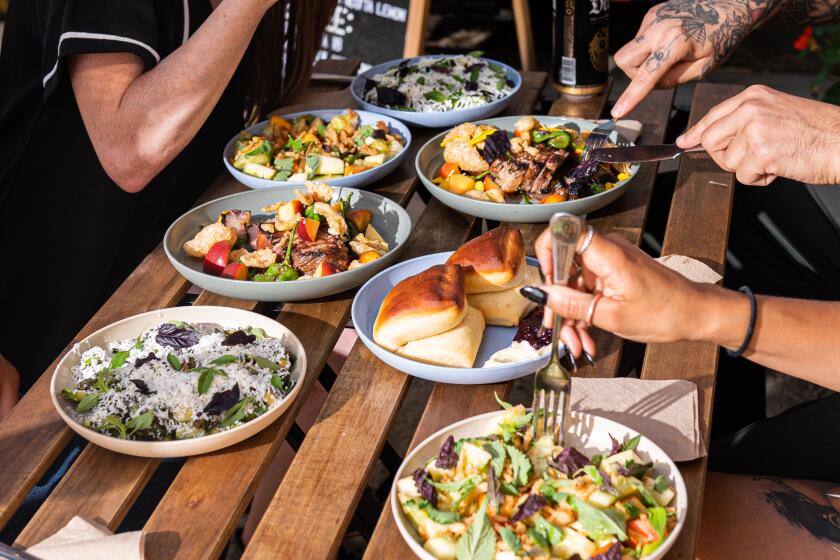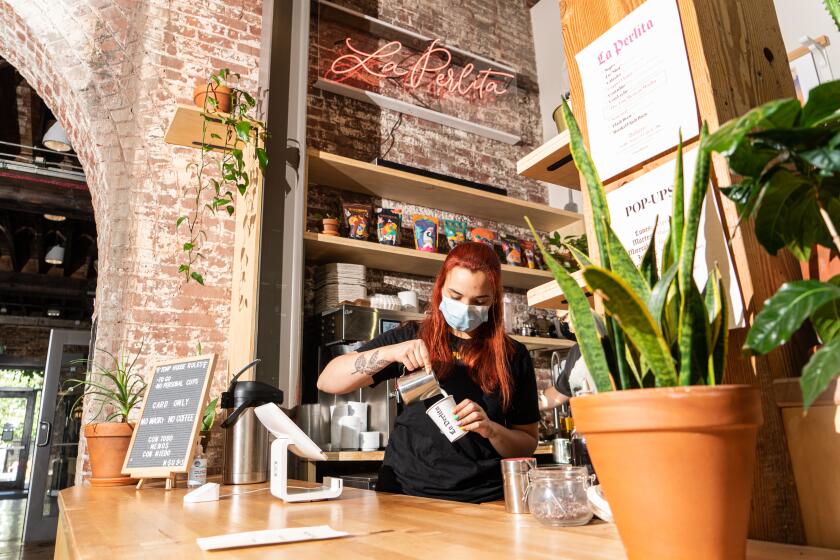Amid chaos, these Portland restaurants found a way to look forward — and thrive
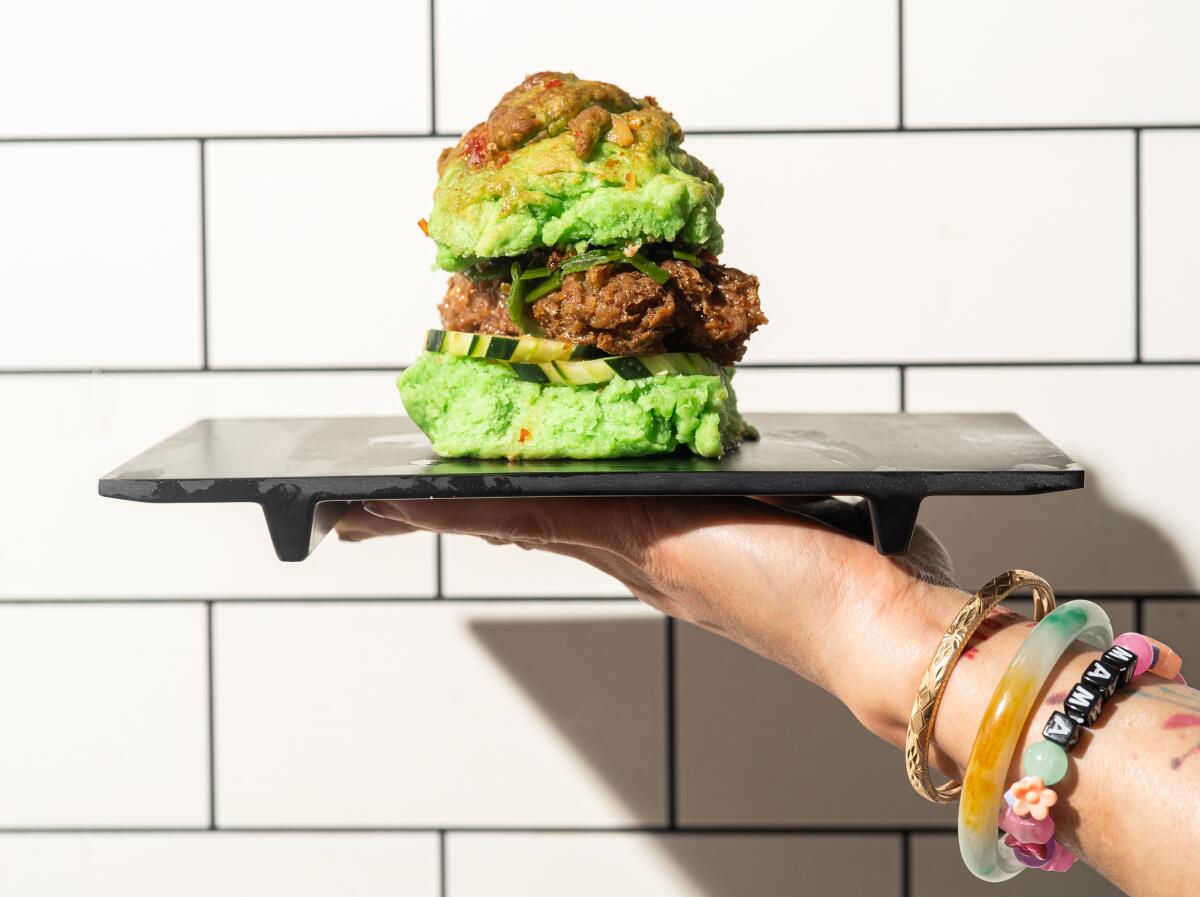
For Portland, Ore., the last 18 months have played out in a series of trials and tribulations without comparison in modern times: a pandemic that has devastated lives and businesses, wildfires and unbreathable air, civil unrest and a recent day in June where the temperature climbed to 116 degrees.
Many of the places that have come to define 21st century Portland were shuttered, at least temporarily, or reinvented, and that is very much the case for restaurants. On Aug. 10, with anxiety and infection rates rising, the governor of Oregon signed a new mask mandate, and many restaurants now require proof of vaccination for indoor dining.
Portland food carts adapt, attracting new talent and giving established chefs another platform
In a city once viewed by the wider world as a hotbed for craft beer, casual modern cuisine and detached ironic whimsy, what is happening today?
“It’s been quite the journey,” says chef Thuy Pham of Mama Đút, one of Portland’s most lauded new restaurants. Her story, like that of so many chefs and restaurateurs across the city, is indelibly linked to the strife of the last year and a half. Thousands of restaurant jobs were lost, at least for a time. Scores of dining and drinking establishments closed, including the Pok Pok family of restaurants and John Gorham’s Toro Bravo.
But many chefs and restaurateurs have found the wherewithal to look forward, drawing from deep wells of creativity and personal expression to build something that feels challenging, compelling and, against all odds, fun. Just as great art and music historically emerge from times of societal conflict, so too has Portland’s culinary scene become a canvas to express joy and struggle, often in the same bite. Here’s a sampling of restaurants to keep in mind for your next trip north.
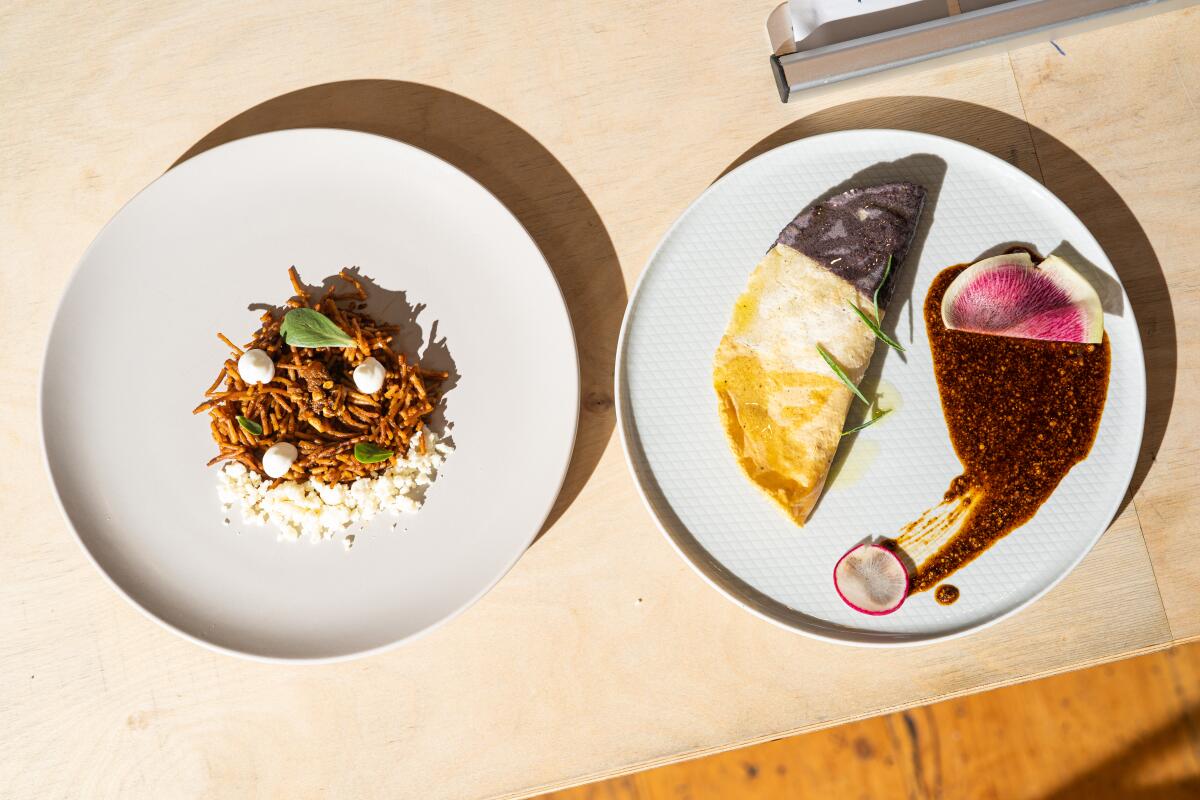
Republica
“We are here to tell the full story of Mexican cuisine,” Republica chef Lauro Romero said. “The good and the bad.” The sun had just set over the restaurant’s lush patio in the Pearl District, where Romero, owner Angel Medina and a tight team of collaborators have crafted a menu that focuses on the history of Mexico’s food and legacy through a lens of French and Japanese culinary techniques.
Republica offers a chef’s selection of dishes each evening alongside curated beverage pairings. Romero and Medina, a gifted maitre d’, riff joyously across five courses (omnivore or vegetarian), that challenge preconceived notions around colonialism, history and the complex ethnography of Mexican cuisine.
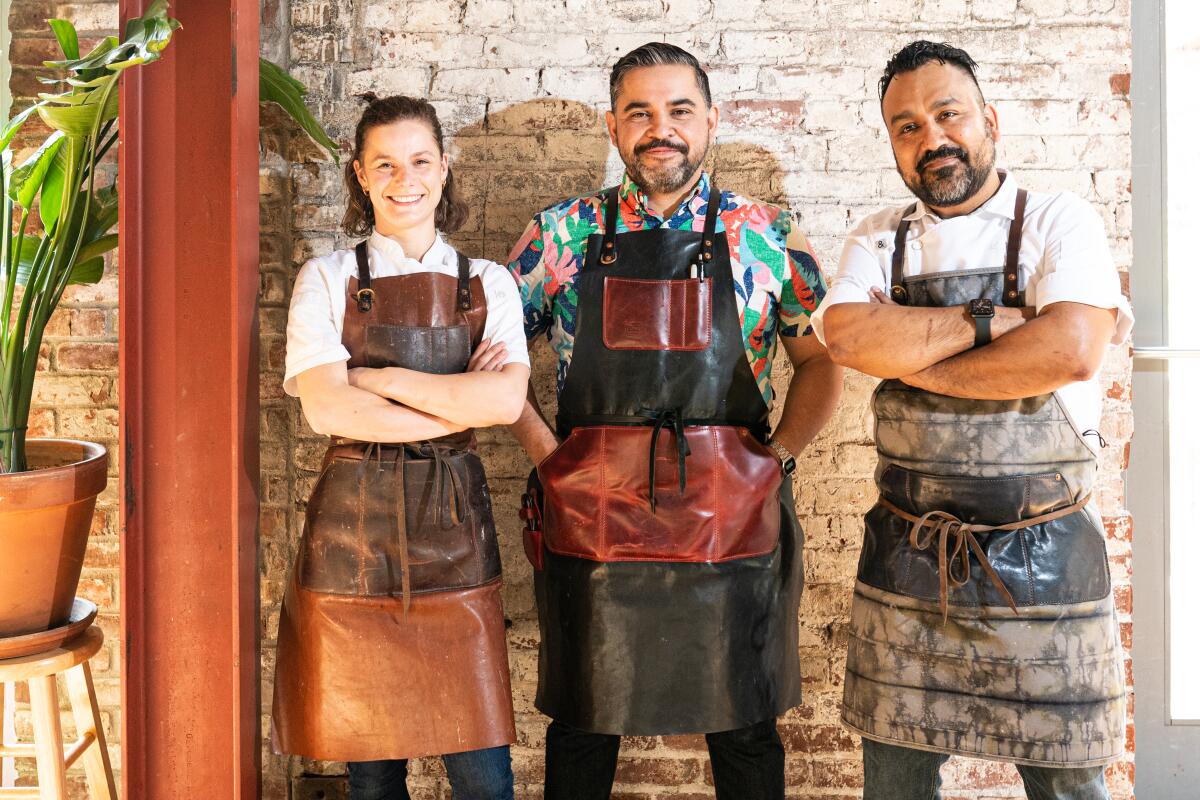
Dinner might include a hibiscus soup modeled on the classic jamaica agua fresca, upon which a sphere of Crenshaw melon, Oregon coast crab and puffed amaranth floats effortlessly, accompanied by an anecdote from Medina about Aztec foodways. Traditional memelas topped with spicy nopales are plated alongside two European imports, radishes and olive oil. Later you might be served a sort of pre-Columbian risotto— corn fungus, arborio and sweet corn cream — followed by a dish of pasta (cooked in mild red chilies) that’s formed into a sort of bird’s nest, laden with cotija cheese and escamoles, a kind of ant larvae. The menu changes nightly.
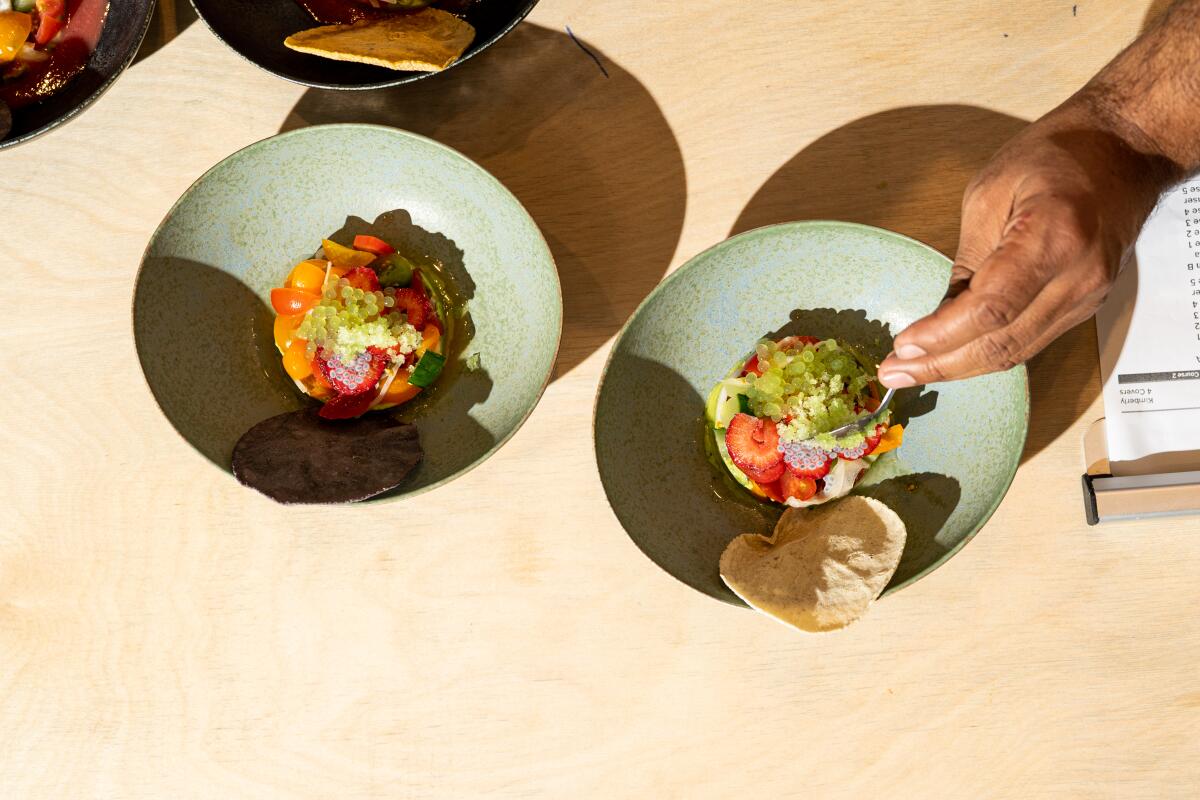
Reinvention allowed some of Portland’s mainstay restaurants to serve another day.
Pastry chef Olivia Bartruff may be the restaurant’s secret weapon: At the end of one dinner, I was served atole ice cream with achiote meringues alongside strawberry fennel tres leches cake, which arrived with a short story about the dish’s twisting, turning history. Between the hospitality, the beverages, the cuisine and the narrative, it’s no wonder that Republica ends up on many “exciting new restaurants” lists.
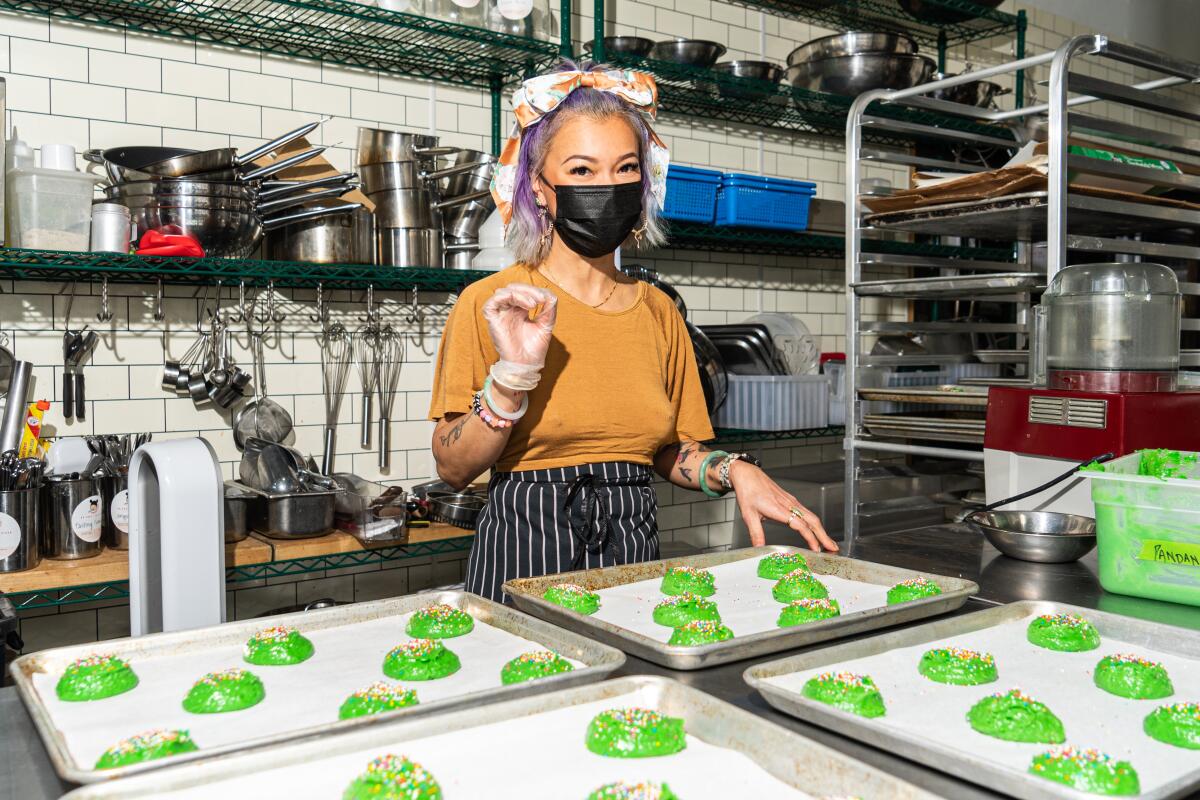
Mama Đút
There may be no more emblematic culinary pivot of the last 18 months in Portland than Mama Đút, a vegan Vietnamese luncheonette whose origin story reads like a film script. “It was my 40th birthday,” chef and founder Thuy Pham recalled, “and I was dead in the water.” A hairdresser by trade, Pham’s source of income seemingly evaporated overnight in the initial panic of the pandemic. A personal interest in veganism led her to try her hand at making a batch of mock pork belly, a skill she learned by watching Buddhist monks on YouTube, and she shared the results on Instagram. Then the orders started rolling in.
“I spent my last $500 on packaging and materials,” Thuy remembered, shaking her head. “And now I can’t believe I’m here.”
A year later — after pop-ups, commissary kitchens and food fairs — Mama Đút now can be found inside a small bricks-and-mortar space, drawing daily crowds of vegans and omnivores.
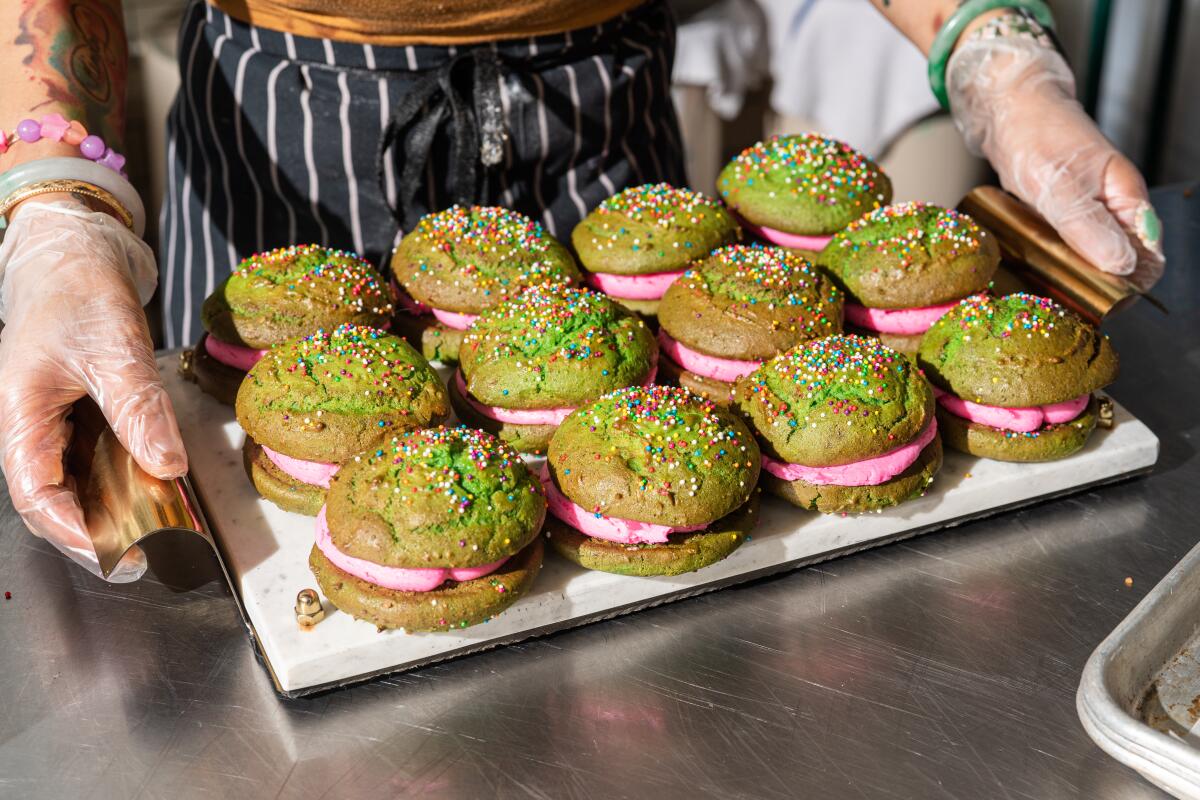
Pham offers an evolving set of dishes out of her tiny counter space in Southeast Portland, serving burnt rice waffles topped with scallions and jackfruit, vegan banh mi with her signature mock pork belly, and fried mushroom bao buns drizzled in kimchi aioli. The daily dessert specials are notable — including strawberry lychee cheesecakes, ube cinnamon rolls, pandan whoopie pies — along with wonderfully tangy limeades in flavors like passion fruit and Thai tea. If Pham is serving her vivid-green pandan biscuit with five-spice soy ribs, order swiftly — it routinely sells out
“Vegans don’t want to be an afterthought,” said Pham, who is outspoken on social media around issues of activism and social justice. “I don’t know if it’s because I’m a woman of color, but I never thought I could do this before now. And so, to finally be seen now, and celebrated for my food, it has empowered me to stand up for my authentic self. Take me — and my food — for who I am.”
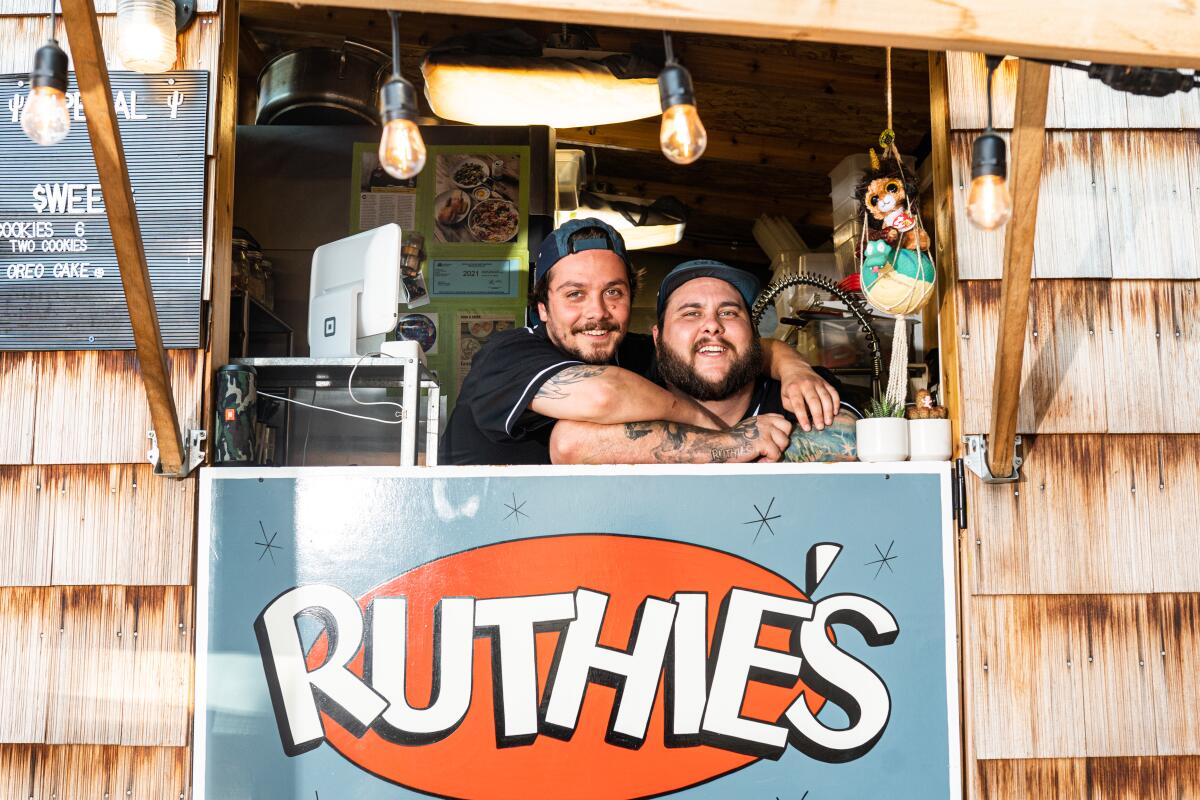
Ruthie’s
There’s nowhere else in Portland — and perhaps America — quite like Ruthie’s, an haute-nouveau reinterpretation of “Mormon cooking” (a term used by the chef-operators).
Collin Mohr and Aaron Kiss grew up together in Ogden, Utah, and cooked their way through kitchens in Salt Lake City and Portland before opening Ruthie’s in October 2020, after pandemic restaurant layoffs left them out of work.
The restaurant — all 120 square feet of it, housed inside a food cart with a wood-fired oven — is putting out beautiful food, with recipes inherited from Mohr’s grandmother Ruth as a thematic throughline. Some items, like the cart-made biscuits, pickles, jams and desserts, come directly from a ward cookbook passed down through generations in the Mormon community of Ogden.
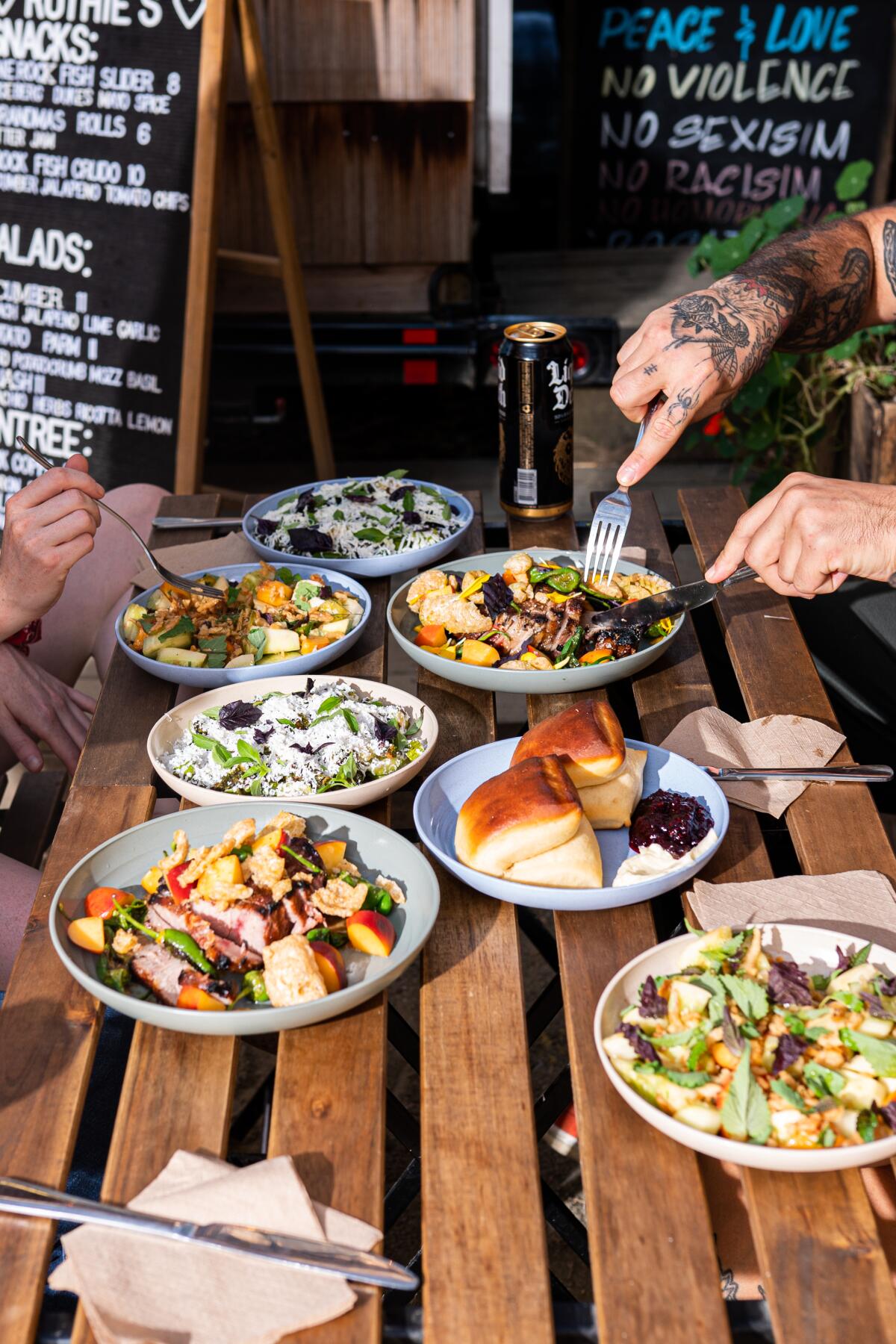
“We’ve spent hours in the kitchen with Grandma Ruthie,” said Mohr, “learning how she does it and letting her slap our hands away.”
But other plates — a polyphonically crunchy pea salad with barley, cherries, goat cheese and sunflower greens; a cucumber salad with tonnato, shaved fennel and alliums; or a peanut butter and jelly pork chop with cherry gastrique and fresh basil — indicate a startling level of professionalism and cheffy composition. You’d be forgiven for blinking twice when you learn this is a two-man operation working out of a food cart.
“Mormon food is so loose-ended,” said Mohr, ”and it’s stuck in the ’50s in some ways. But it lets us express our personalities. We’re doing Pacific Northwest cuisine with a Mormon influence and making it ours.”
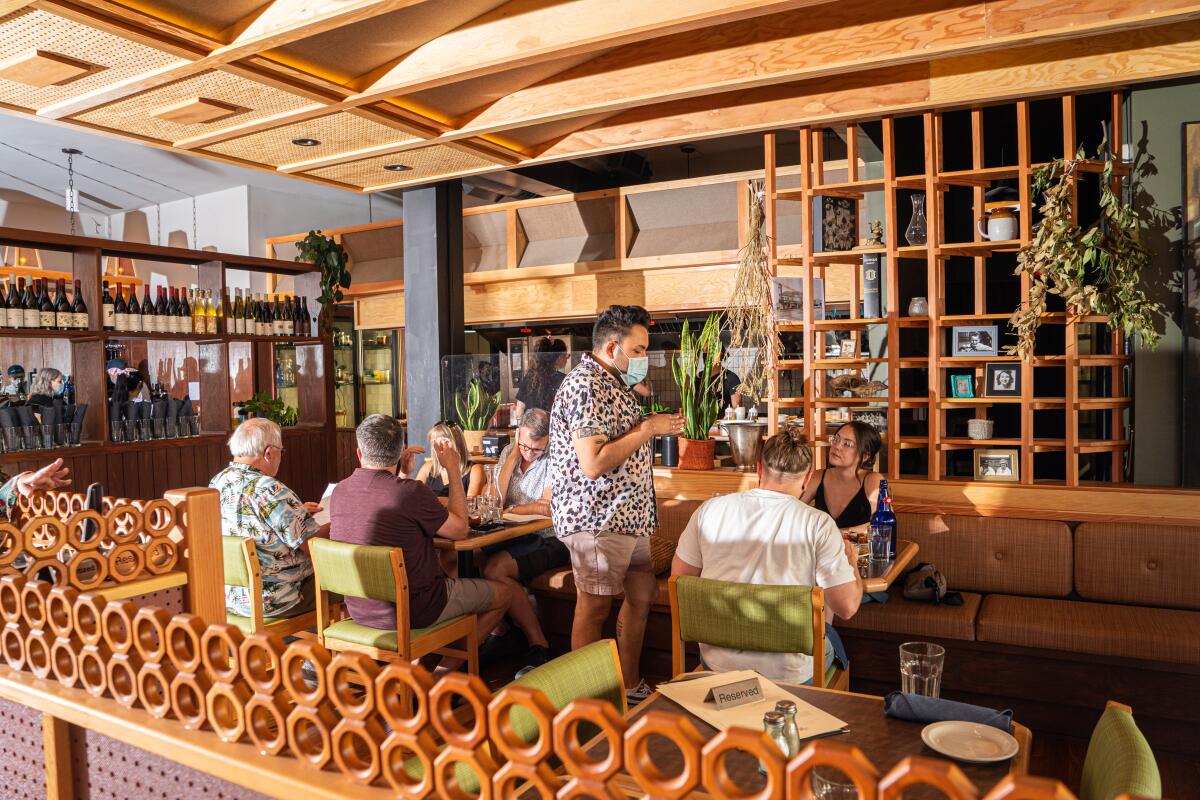
Lazy Susan
Local buzz was significant in early 2020 when noted Portland restaurateur Akkapong “Earl” Ninsom — of Hat Yai, Paadee and the Thai tasting counter Langbaan — announced his first concept without an overt Thai influence, overseen by a team that included alumni from some well-known Portland restaurants.
“We were slated to open March 15,” recalled Andrew Mace, Lazy Susan’s co-owner and culinary director. “Then we had to pump the brakes.” What followed was a whiplash-inducing few months with numerous pivots: open-air charcoal plate lunches, brunch boxes, outdoor seating and attempts at opening their retro-dinette-inspired dining room.
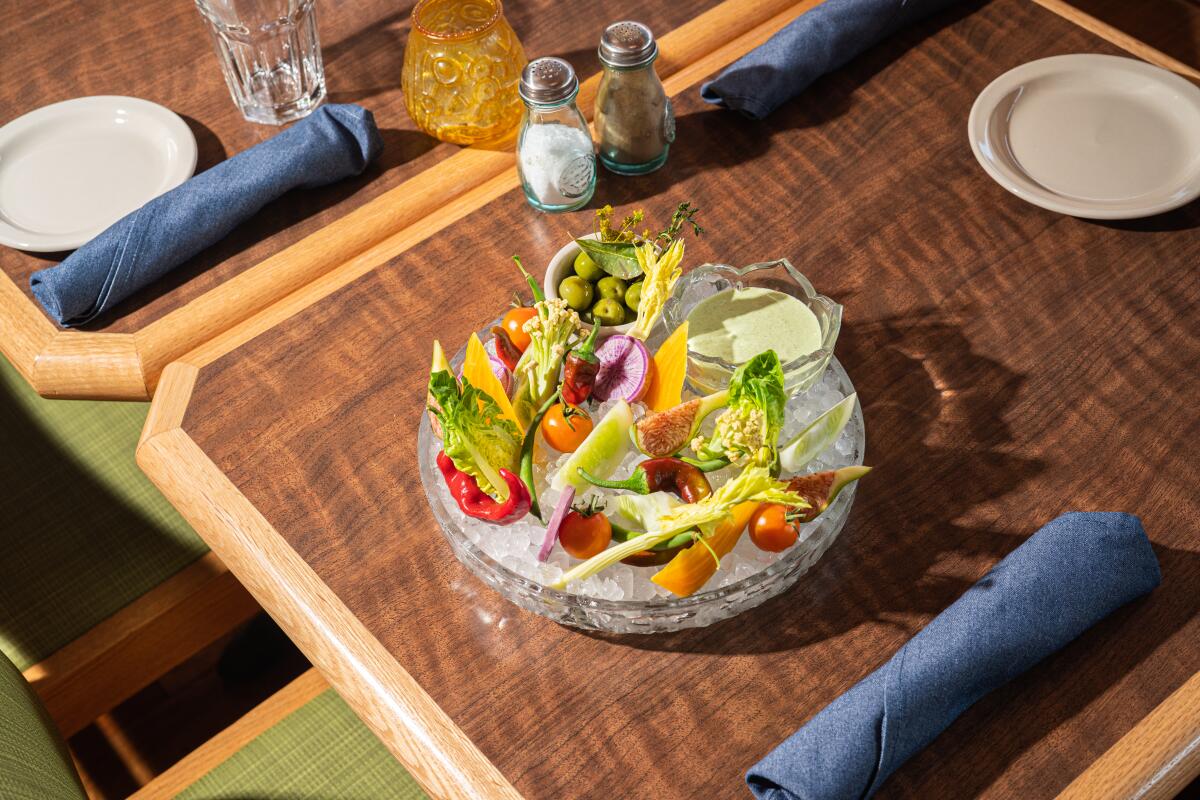
All this is prologue: In summer of 2021, Lazy Susan has emerged as one of the city’s most notable new restaurants, synthesizing a diverse and global set of influences into a menu and bar program that defies easy categorization. Your dinner at Lazy Susan might look something like this: a Negroni to start, followed by smoked whitefish salad with fried saltines, a chicken-fried pork cutlet with sauce gribiche topped with a Thai-style fried egg, a jerk quail skewer built on a recipe from line cook Chris Creque’s childhood in St. Thomas, and coal-roasted eggplant laden with labneh and honey, finished off with a slice of Mennonite peanut butter pie for dessert with a glass of oloroso sherry.
“We may have lost some of that honeymoon phase during the opening,” Mace said, “but I feel like now we’re starting to really define who we are.”
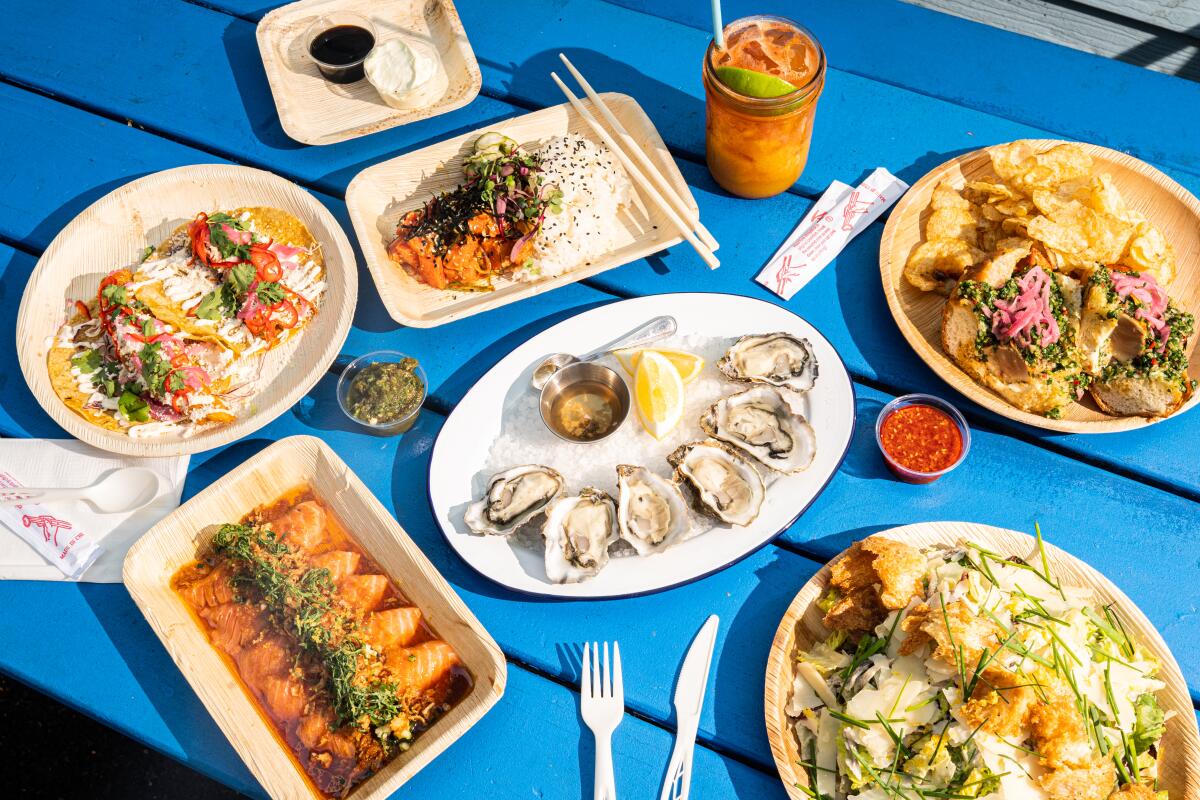
Flying Fish
A simple dictum to travelers visiting the Pacific Northwest: While you’re here, think seafood. In Portland, one of the seafood standouts is Flying Fish, a hybrid restaurant and fish market in the heart of the Southeast quadrant. The restaurant’s founder, Lyf Gildersleeve, is a fishmonger who grew up in the family trade and has managed Flying Fish across a variety of forms over the last decade.
Flying Fish’s bricks-and-mortar shop opened in February 2020, carried on as a limited-capacity fish market through a fearful spring and in June 2020 began full service outside on its open-air patio.
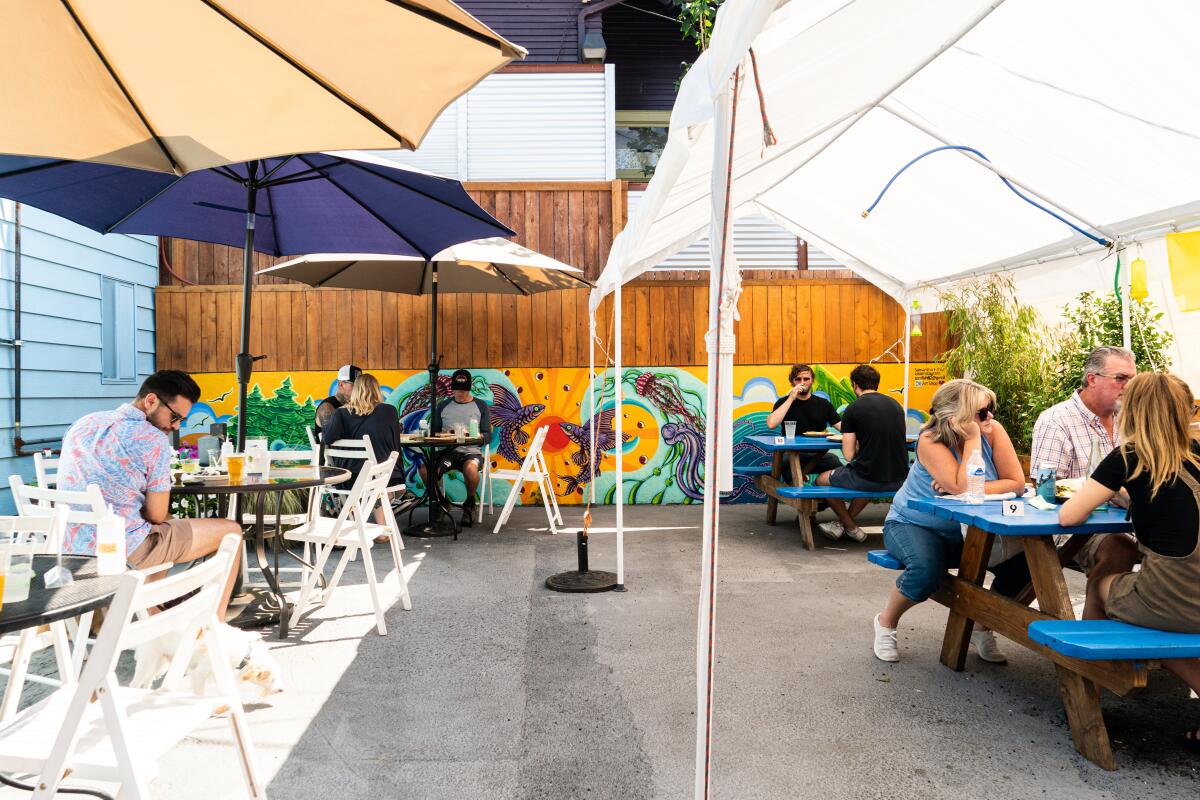
The menu at Flying Fish is drawn from the fish market: wild Alaskan salmon poke, Oregon coast halibut fish and chips, a daily slate of a dozen or more oysters from farms in Oregon and Washington state, and a massive Caesar salad studded with radicchio and anchovy fillet. They aren’t reinventing the wheel here — Gildersleeve stashed fish-shack menus for years before opening the restaurant, whose kitchen is overseen by chef Erik Englund — but what comes out of the kitchen at Flying Fish positively glows with that just-caught quality you get only from incredibly fresh seafood.
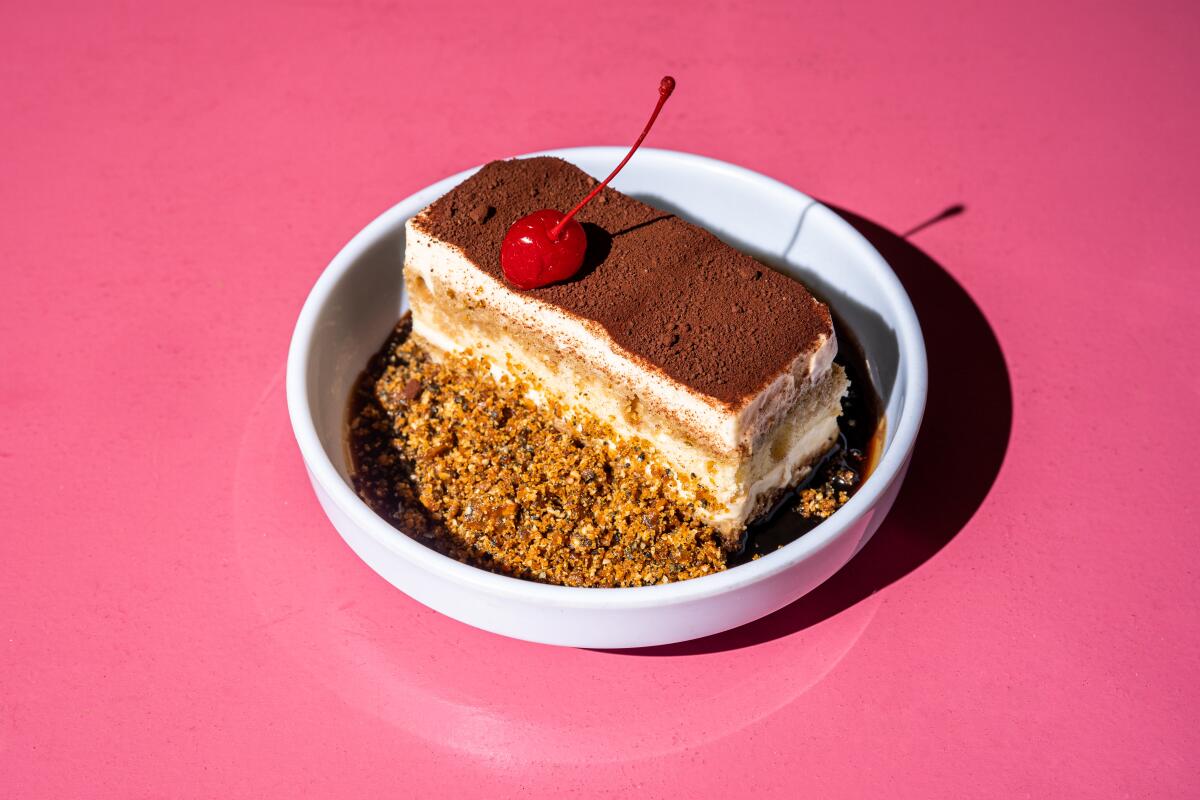
Oma’s Hideaway
Sometimes a pandemic pivot ends up stealing the show. Such is the case at Oma’s Hideaway, which began life as a takeout tent outside Indonesian restaurant Gado Gado, one of the city’s hottest 2019 openings. “Oma’s is a spinoff that took on a life of its own,” says co-owner Mariah Pisha-Duffly. Now it’s here to stay.
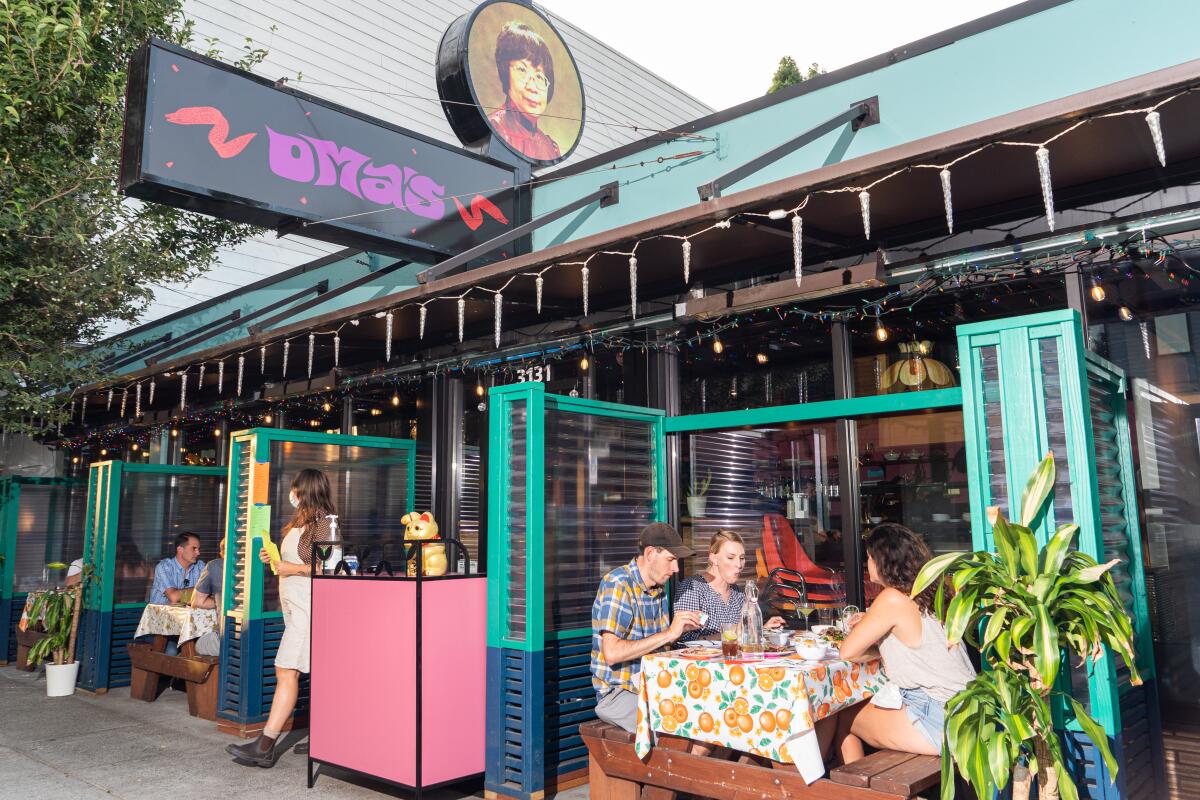
Oma’s draws on the culinary history of chef Thomas Pisha-Duffly’s grandmother, incorporating elements of Peranakan cuisine as well as contemporary influences from Northern Europe and New England. “Peranakan is sometimes also called Straits Chinese,” Mariah Pisha-Duffly explained, “a heritage that fuses Chinese, Malaysian and Indonesian food. We like to joke that it’s the original fusion cuisine.”
Diners at Oma’s can expect a kaleidoscopic approach to pan-Asian cooking, from charcoal-roasted game hen with coconut sambal to Chinese duck and foie gras sausage with braised nappa cabbage to an Instagram-star soft-shell crab sandwich with papaya salad (fans of the Night + Market fried chicken sandwich, take note). Food-friendly cocktails cruise alongside plates of Chinese barbecue and handmade egg noodles. A durian tiramisu, gentle and unctuous, steals the show at dessert.
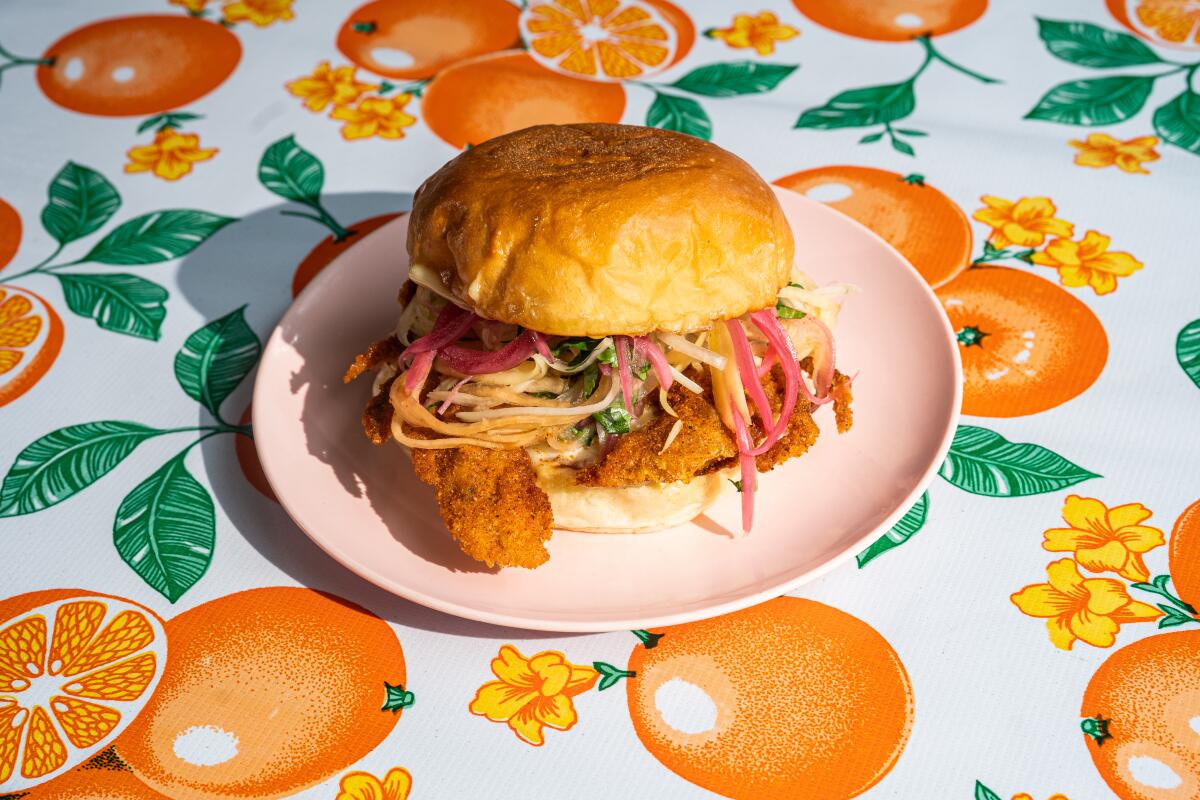
More to Read
Eat your way across L.A.
Get our weekly Tasting Notes newsletter for reviews, news and more.
You may occasionally receive promotional content from the Los Angeles Times.
